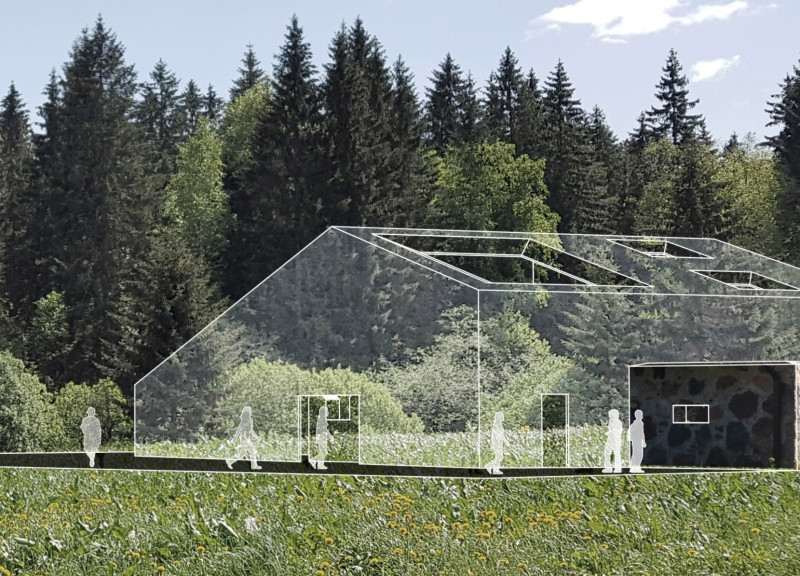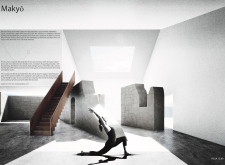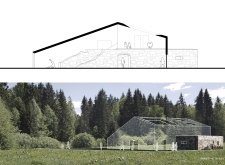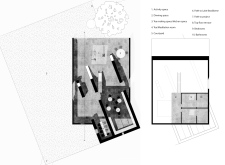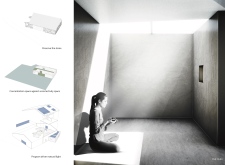5 key facts about this project
The architectural design focuses on blending daily activities with moments of quiet reflection. Set in a natural landscape, it serves as a venue for tea preparation and meditation. The use of sturdy stone walls provides a strong foundation for the building while a lighter wood structure adds a sense of calmness. This design draws inspiration from Zen philosophy, particularly the term *makyō*, which means "ghost cave."
Building and Material Composition
The project features stone walls that create supportive spaces. This choice of material not only adds stability but also connects the structure to its surroundings, giving a grounded feel to the experience. The lighter wood structure wraps around the stone, facilitating a thoughtful relationship between the active and tranquil areas of the design, and encouraging interaction with the environment outside.
Spatial Organization
Inside, the layout encourages easy movement between areas designated for social engagement and quiet contemplation. Different zones are clearly separated yet maintain a sense of connection, allowing individuals to transition smoothly from the tea-making space to the meditation room. Carefully designed portals enhance visibility and create openness, inviting nature into the interior spaces.
Light and Atmosphere
Light has a significant impact on the overall experience in the building. Openings are designed to manage the flow of light, establishing a play between shadows and brightness. The walls, painted white, reflect daylight throughout the interior and help dissolve the boundaries between indoor and outdoor areas. This emphasis on natural light creates an environment that prioritizes sensory experiences and fosters a connection with nature.
Outdoor Integration
Direct access from the activity space to a courtyard is a key feature of the design. This outdoor area extends living and gathering spaces, particularly suitable for the warmer months. The courtyard serves as a pathway to Bezdibene Lake, linking the structure to the surrounding natural environment. Additionally, a private terrace at the top of a heavy steel staircase offers a quieter retreat, enhancing the diverse experiences available within the setting.
The combination of stone, wood, and light leads to a design that welcomes interaction and encourages introspection, creating a strong bond with the natural landscape evident in the way sunlight shifts across the interiors throughout the day.


